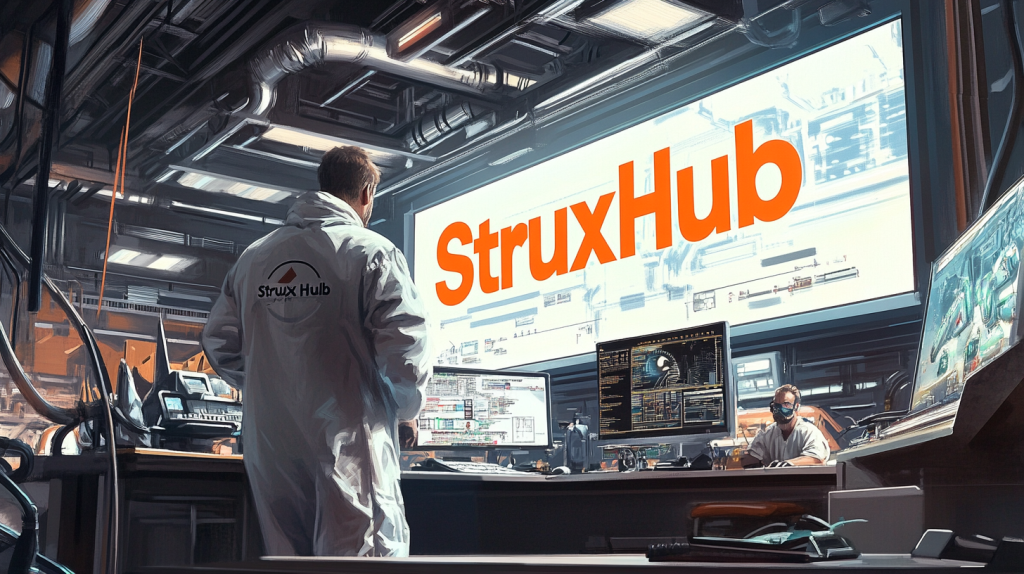Best Construction Materials Management Software for Tracking Inventory and Orders
Table of Contents:

Keeping track of materials on a construction site is a full-time job—and when it’s not done right, the consequences hit hard. Lost inventory, double orders, and delayed deliveries can grind work to a halt. For general contractors, superintendents, and procurement teams, having clear visibility into material stock, purchase orders, and delivery timelines is no longer a nice-to-have—it’s a necessity.
That’s where construction materials management software comes in. These platforms help track what’s been ordered, what’s in stock, what’s been used, and what’s running low. By replacing spreadsheets, texts, and guesswork with real-time data, teams can prevent waste, reduce reordering errors, and ensure the right materials are always on hand when crews need them.
In this guide, we’ll break down what to look for in a materials management platform, how it supports better inventory control, and why it’s a must-have for efficient, large-scale construction execution.
What Is Construction Materials Management Software and Why Does It Matter?
Construction materials management software is a digital system that helps field and office teams track, manage, and optimize the flow of materials throughout a project. From the moment a PO is created to the time materials are installed or consumed, this software provides a clear record of every transaction, transfer, and delivery.
Unlike standard inventory systems built for warehouses or retail, construction-specific tools account for mobile storage, on-site deliveries, batch usage, and material losses. They often include features like barcode scanning, delivery verification, stock level alerts, and integration with procurement and project scheduling systems.
The right materials management system eliminates surprises—like finding out a key component is out of stock halfway through installation. It also cuts down on overordering, reduces loss due to theft or damage, and helps ensure you’re not paying for materials that never made it to the jobsite.
Top Benefits
- Real-time visibility into material status and stock levels
Stay ahead of shortages and reorders by knowing exactly what’s on hand across all locations. - Fewer delays due to missing or misplaced materials
By tracking deliveries and usage in real time, teams avoid disruptions that slow down the schedule. - Better cost control and waste reduction
Reduce unnecessary purchases, manage surplus, and keep projects within material budgets.
Best Practices
- Use mobile-friendly tools for field reporting
Let foremen and warehouse staff update stock levels, confirm deliveries, or request reorders from the field. - Integrate materials tracking with procurement systems
Align material status with open POs and delivery schedules to avoid miscommunication. - Track usage by task or trade
Allocate materials to specific activities to understand where your resources are going—and what’s driving costs.
Materials management software brings order to the chaos of jobsite logistics—and gives your team the insight to plan smarter and build faster.
How Does Materials Management Software Improve Inventory Tracking?
Inventory tracking in construction is complicated. Materials are stored in multiple locations, transferred between sites, consumed at different rates, and exposed to theft, damage, or miscounts. Without a centralized system, it’s easy to lose control of what’s where, how much is left, and when you need more.
Materials management software solves this by creating a digital inventory ledger. Every material—from fasteners to structural steel—can be logged with quantities, locations, conditions, and usage history. Systems often include barcode scanning, QR code labels, or RFID tracking to simplify updates and prevent human error.
With automated alerts, your team gets notified when stock is low or when materials haven’t been checked in at the expected time. This allows superintendents and project managers to stay proactive instead of scrambling to find or reorder items at the last minute.
Top Benefits
- Centralized control of all materials and storage locations
Know what’s available in trailers, laydown yards, containers, and warehouses at a glance. - Reduced shrinkage and loss due to missing inventory
With digital logs and delivery verification, you always know what’s been received, moved, or consumed. - Faster, more accurate reporting for project planning
PMs and procurement staff can forecast material needs with confidence using real-time data.
Best Practices
- Use barcodes or QR codes to simplify tracking
Label inventory with scan-ready tags so field staff can log updates with minimal friction. - Set reorder points and low-stock alerts
Keep projects running by ensuring reorders happen automatically—before it’s too late. - Audit your inventory weekly or biweekly
Schedule routine checks to catch discrepancies and keep your inventory accurate.
A strong inventory tracking process turns your materials into a strategic asset—instead of a source of delays and guesswork.
Related Articles:
The Construction Site Coordination Platform Built for Field Teams: StruxHub
What Role Does Materials Management Play in Jobsite Efficiency?
Jobsite efficiency hinges on having the right materials in the right place at the right time. Without clear materials tracking, crews end up waiting, doubling work, or improvising—none of which help your schedule or bottom line. Materials management software gives field teams the confidence to execute without interruptions or confusion.
These platforms allow supers and foremen to see what’s available, when deliveries are expected, and where materials should be staged. They can request transfers between locations, track material conditions, and avoid duplication. For multi-phase or multi-trade projects, this clarity helps sequence work correctly—ensuring each team has what they need when they need it.
Additionally, managing materials efficiently reduces clutter and improves safety on-site. Instead of piling everything into a laydown area, teams can plan deliveries and usage by phase, reducing movement and minimizing the chance of damage or theft.
Top Benefits
- Fewer work stoppages due to material shortages
Teams stay productive and focused when materials are reliably available and accessible. - Improved planning and sequencing of tasks
Knowing what’s on hand helps schedule work more accurately—reducing wasted time between trades. - Better coordination between procurement, logistics, and field crews
Everyone works from the same data, avoiding overlaps or missed deliveries.
Best Practices
- Stage materials by task or phase
Deliver only what’s needed for the current stage to reduce clutter and keep sites organized. - Use field-accessible dashboards for materials status
Let crews and supers check availability or location without calling the office. - Schedule materials checks during daily huddles
Make materials status a regular part of coordination meetings to catch issues early.
When materials are managed with precision, your project gains momentum—saving time, money, and stress.

How Can Materials Management Software Help Control Costs?
Materials are one of the largest expenses in any construction project, and mismanaging them is one of the fastest ways to blow your budget. Untracked inventory, double ordering, theft, spoilage, and overages all eat away at profits. Construction materials management software gives you real-time visibility into what you’re spending, what you’re using, and where waste is occurring—so you can stay in control.
Instead of reactive purchasing or relying on rough estimates, your procurement and finance teams can use real data from the field to make informed decisions. This means better forecasting, fewer surprises, and reduced emergency orders (which usually come at a premium).
More advanced platforms even allow you to assign materials to specific cost codes or phases, which helps during billing, reporting, or project audits. And when materials are returned, over-ordered, or transferred to other jobs, that movement is tracked—ensuring your records stay accurate and your books stay clean.
Top Benefits
- Clear visibility into actual materials consumption
Know how much of your budget is being spent—and wasted—on specific items, trades, or locations. - Prevention of overbuying or duplicate orders
When field and office teams share material data, they avoid ordering the same items twice. - Better forecasting and supplier negotiations
Historical usage data helps you predict future needs more accurately and negotiate volume pricing.
Best Practices
- Assign cost codes to materials as they’re ordered or received
This links procurement directly to your job costing system for better accountability. - Review material waste reports monthly
Look for patterns in overuse or spoilage to improve future project planning. - Use approval workflows for high-dollar inventory items
Add a layer of control for expensive or long-lead items to reduce unnecessary spend.
When you treat materials as a measurable financial asset—not just a jobsite need—you protect your profit margins and improve long-term performance.
How Does Materials Management Software Support Multi-Project Operations?
If your company manages multiple jobs at once, tracking materials across different sites becomes exponentially harder. Without centralized visibility, it’s easy to misallocate deliveries, misplace materials, or lose sight of where resources are being used. That’s why materials management software is so valuable for general contractors and operations teams running concurrent projects.
A good platform gives you a high-level dashboard that shows materials in stock, in transit, or on hold across all active jobs. You can monitor inventory levels at each location, see which project requested what, and identify which deliveries are behind schedule. This is particularly useful for sharing excess materials between jobs, consolidating vendor orders, and reducing redundancy.
It also helps teams prioritize deliveries based on schedule urgency, labor readiness, or inspection deadlines. When materials are aligned with project priorities—not just delivery windows—your crews work more efficiently, and your company avoids juggling last-minute logistics.
Top Benefits
- Centralized oversight of inventory across multiple jobs
See what’s where, what’s needed, and what’s excess—so you can move materials strategically. - Improved logistics coordination for regional or national teams
Plan deliveries and transfers based on geography, deadlines, or crew availability. - Smarter use of surplus or leftover materials
Identify reusable stock and avoid reordering what you already have on another job.
Best Practices
- Tag materials by project and location upon receipt
This avoids mix-ups and helps your team know exactly where materials should go. - Establish transfer request workflows
Let PMs or supers request materials from other job sites before submitting new purchase orders. - Use dashboards to highlight at-risk projects
Flag jobs that are low on key materials or have delayed deliveries so leadership can step in.
Whether you’re running two jobs or twenty, materials management software keeps you in control—without spreadsheets, texts, or guesswork.
What Compliance and Documentation Features Should You Expect?
Materials aren’t just physical assets—they’re also tied to compliance, documentation, and closeout. Whether you’re tracking VOC emissions, ensuring fire ratings, or validating warranty coverage, your materials system should support more than just delivery status.
Materials management software should allow you to attach documents like spec sheets, compliance certifications, and warranty information directly to each item or order. This ensures that you can retrieve documentation quickly during inspections, submittals, or final project closeouts.
Field teams should also be able to log material conditions upon delivery, take photos, and note whether items meet the project specs. This documentation not only protects your team from liability—it also supports better communication with suppliers, subcontractors, and owners.
Top Benefits
- Faster access to required documentation
From LEED credits to fire-resistance ratings, find what you need instantly instead of digging through folders. - Stronger closeout packages and O&M handoffs
Keep a digital record of all materials used, approved, and installed—ready for client turnover. - Legal and safety protection in case of disputes
Time-stamped records of what was delivered, when, and in what condition can protect your team from claims.
Best Practices
- Attach spec sheets and certifications to material entries
Upload once, access anytime—ideal for field teams and compliance staff. - Use digital signatures or photo logs for verification
Confirm that materials meet project specs before installation begins. - Include materials documentation in your closeout process
Export logs or link them to O&M manuals so owners get full transparency.
Modern construction requires documentation at every step—and your materials platform should make it automatic, not an afterthought.
Related Articles:
Best Guide to Construction Management Software
Superintendents: Effective Training Strategies for Construction Management Software Users
The Best Guide to Delivery Management Systems (DMS) for Commercial Construction

How StruxHub Enhances Materials Visibility and Team Coordination
StruxHub doesn’t replace your materials tracking system—but it amplifies its effectiveness by ensuring the information actually gets used in the field. It acts as a jobsite coordination platform where superintendents, project managers, and field teams can track what’s been ordered, what’s on the way, and what needs to be staged.
For example, if your materials software indicates a critical delivery is arriving Wednesday, that information can be linked to a StruxHub task for staging, verification, or immediate installation. Crews see what’s coming, understand what it’s for, and take action without having to dig through a PO log or email chain.
StruxHub also gives you space to assign materials-related responsibilities, document issues, and track task progress—all in real time. Whether you’re logging photos of damaged goods or coordinating a delivery with a crane pick, StruxHub brings context, clarity, and accountability to the process.
Top Benefits
- Live updates tied to materials-related tasks
Connect procurement and scheduling data to what’s actually happening on the jobsite. - Improved coordination between field and office
Everyone sees the same delivery statuses, task deadlines, and material dependencies. - Less downtime due to communication gaps
Field teams can flag issues or verify deliveries instantly—so work keeps moving.
Best Practices
- Tag tasks like “Awaiting Materials” or “Material Ready for Install”
Keep everyone aligned on what materials are needed and when. - Link photos and documents directly to tasks
Attach packing slips, spec sheets, or warranty details to reduce back-and-forth. - Make materials status part of daily task reviews
When deliveries and usage are tracked in StruxHub, nothing gets missed or delayed.
With StruxHub, materials management becomes more than an office function—it becomes a live part of your jobsite’s daily rhythm.

StruxHub
Experience the power of StruxHub today and witness firsthand how it can revolutionize your construction operations.
FAQ
What are the most important features to look for in construction materials management software?
The most important features in construction materials management software revolve around real-time visibility, mobile access, inventory tracking, and integration with other project systems. First and foremost, you want a platform that provides real-time data on inventory levels, material location, and order statuses. This helps your team make fast, accurate decisions and avoid costly delays caused by missing or misplaced materials.
Inventory tracking should be granular and flexible. The software should allow you to track quantities by item, location, condition, and phase. Barcode or QR code scanning is a huge plus—it minimizes manual entry and lets field staff quickly update records using mobile devices. Alerts for low stock levels and reorder thresholds are also critical, especially for frequently used items like concrete forms, fasteners, or conduit.
Mobile accessibility is another must. Your superintendents and foremen need to check material status, confirm deliveries, and log issues directly from the field. Look for platforms with native iOS and Android apps or responsive mobile interfaces.
Integration is where great systems really shine. Your materials software should sync with procurement, scheduling, and accounting tools—so you don’t have to enter data twice or guess what’s accurate. For example, linking material delivery data to your project schedule lets you align field tasks with actual availability.
Finally, documentation features like attaching spec sheets, warranty details, or inspection notes help your team stay compliant and reduce legal risk. When these features work together in one platform, you get a holistic view of your materials lifecycle—from order to install.
How does materials tracking reduce waste and improve efficiency on job sites?
Materials tracking directly reduces waste by giving your team the visibility and accountability they need to plan, stage, and use materials correctly. Without tracking, materials often get lost, over-ordered, or forgotten—leading to clutter, rework, or unnecessary spend. With the right system, you can pinpoint where materials are, how much is on hand, and what’s been used—giving you full control over jobsite flow.
When materials are tagged by trade, task, or work area, they’re staged more efficiently. This means only what’s needed is delivered, reducing clutter and minimizing risk of theft or damage. Crews can spend less time hunting for tools and supplies and more time building. It also improves safety: a well-organized site is easier to navigate, and materials aren’t stored in pathways or lift zones where they pose hazards.
Real-time updates also help the field react quickly to shortages or misdeliveries. If a box of lighting fixtures arrives with the wrong SKU, the team can document and flag it immediately—triggering a replacement order without disrupting the entire timeline.
Materials tracking also allows for better forecasting. If one project is consistently using more drywall than estimated, your PMs can adjust future budgets and quantities to avoid repeat issues. That saves money on excess materials and prevents emergency purchases (which often come at a premium).
Ultimately, the system supports a leaner, more precise operation—one where everyone knows what’s available, what’s missing, and what’s next. That clarity translates to better efficiency, less waste, and smoother handoffs between trades.
Can materials management software help with closeout and compliance?
Absolutely. Construction closeouts and compliance documentation depend heavily on accurate records of what materials were used, when they were delivered, and whether they meet spec. Materials management software automates this process by tracking every item’s journey from purchase to installation and linking it to the necessary documentation.
Throughout a project, the software can log details like manufacturer, model, lot number, warranty expiration, and compliance certifications. This is especially critical on projects requiring LEED documentation, fire-rated assemblies, or specialty mechanical systems. Rather than scrambling to collect documents at the end of the job, your team can attach them to each PO, delivery record, or task as they happen.
When it’s time to turn over the building, your closeout package can include a full materials log—complete with PDFs of warranty sheets, safety data sheets, and installation manuals. This gives the owner peace of mind and makes your team look buttoned-up and professional.
Additionally, the software creates a clear audit trail. If an inspector or client asks why a certain product was used, you can show the approval chain, delivery date, and who verified it. That’s a huge advantage in case of warranty claims, disputes, or future modifications.
For teams that work on public infrastructure, healthcare, or government buildings, materials compliance isn’t optional—it’s contractually required. Having a system that automates document capture, organizes it by trade or area, and allows fast export at project end is a major time-saver and risk reducer.
In short, good materials software turns compliance into a built-in part of your process—not a painful scramble at the end.
How does this software benefit superintendents and field teams directly?
For superintendents and field teams, materials management software delivers immediate, practical value—especially when it’s mobile-friendly. These professionals are the ones dealing with the daily logistics of installations, deliveries, staging, and on-the-spot decisions. The ability to check material availability, confirm shipments, and log issues in real time helps them stay productive and avoid costly downtime.
Instead of relying on printed PO lists or calling the office for updates, field staff can view exactly what’s been ordered, when it’s arriving, and where it should be staged. That speeds up coordination between trades, improves jobsite flow, and helps avoid situations where a crew is ready to work but waiting on materials.
Field teams can also log delivery verifications instantly—using photos, notes, or checklists—which improves communication with procurement and office teams. If a delivery is short or damaged, the issue gets reported fast and handled before it impacts progress.
Another advantage is task alignment. If materials are tagged for specific phases or areas, supers can make sure crews are only installing what’s scheduled—helping maintain quality and sequencing. This keeps jobs on track and minimizes disruption across trades.
And because everything is documented automatically, superintendents don’t have to worry about handwritten logs or memory-based updates. It reduces stress and lets them focus on leading the crew instead of chasing materials.
In short, materials management software gives field teams control, clarity, and confidence—without adding extra admin work to their day.
What role does StruxHub play in supporting materials coordination on-site?
StruxHub plays a crucial role in making sure material-related information doesn’t just stay in the office—it reaches the field in a way that’s clear, actionable, and integrated into daily workflows. While it’s not a procurement or inventory system, StruxHub acts as the connective tissue between your materials tracking tools and your jobsite operations.
Superintendents can use StruxHub to log tasks tied to material deliveries, assign team members to verify items, or flag delays that might affect the build schedule. When a delivery is pending, it can be tagged and surfaced on daily task dashboards so the team knows to prepare. Once it arrives, crews can attach photos, mark it as complete, or trigger installation-related tasks.
This visibility improves accountability and keeps everyone—PMs, supers, vendors, and foremen—in sync. And because StruxHub lives on mobile, teams don’t need to dig through spreadsheets or email chains to find critical information. It’s right there in the platform, linked to the real work happening on site.
It also supports task coordination for reorders, substitutions, or schedule impacts caused by material delays. Rather than emailing back and forth, users can comment directly on tasks, attach updated plans or specs, and resolve issues faster.
Think of it this way: your materials tracking system keeps count, but StruxHub makes sure those counts are understood and acted on in the field. The result? Fewer delays, better communication, and smoother construction execution from start to finish.




